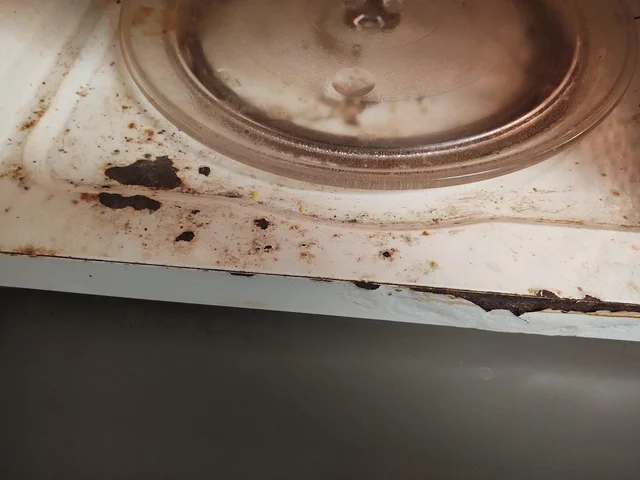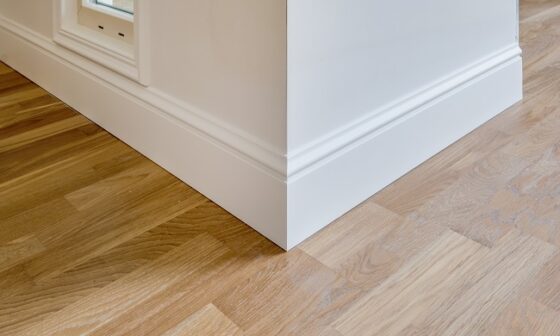
Microwaves have become an essential appliance in many households, providing a convenient way to quickly heat up or cook food.
However, over time, you may notice the appearance of rust inside your microwave.
This can raise concerns about its safety and functionality. In this article, we will explore whether it is bad if your microwave has rust inside, what causes rust in microwaves, and whether a rusty microwave is dangerous.
Understanding Rust in Microwaves
Rust is a result of the corrosion process that occurs when metal is exposed to moisture and oxygen.
Microwaves often have metal components, such as the interior cavity or the rotating plate, which can be susceptible to rust formation.
The presence of rust in your microwave should be addressed promptly to ensure its optimal performance and safety.
What Causes a Microwave to Rust Inside?
Several factors can contribute to the formation of rust inside a microwave. The most common causes include:
1. Moisture Buildup
Microwaves generate heat, and this can lead to the accumulation of moisture inside the appliance.
When the moisture lingers and comes into contact with metal surfaces, it creates an environment conducive to rust formation.
2. Spills and Splatters
Food spills and splatters are a common occurrence when using a microwave. If these spills are not cleaned promptly and thoroughly, they can contribute to the development of rust.
The acidic nature of certain foods, such as tomato sauce or vinegar, can also accelerate the corrosion process.
3. Damaged Interior Coating
Some microwaves have an interior coating that protects the metal surfaces from rust. However, with time and usage, this coating may become damaged or worn out, leaving the underlying metal exposed and vulnerable to rust.
Is Rusty Microwave Dangerous?
The presence of rust inside your microwave raises concerns about safety. While small amounts of rust may not pose an immediate health risk, it is still advisable to address the issue promptly. Here’s why:
-
Potential Contamination
Rust can flake off and mix with your food, leading to potential contamination. Ingesting rust particles is generally not considered safe, as they can contain harmful substances.
-
Compromised Efficiency
Rust can interfere with the microwave’s functionality. It may affect the even distribution of heat, resulting in uneven cooking or heating.
This can lead to undercooked or overcooked food, impacting both taste and texture.
-
Electrical Hazards
In some cases, rust may affect the electrical components of the microwave. This can potentially lead to electrical malfunctions, short circuits, or even electrical shocks.
It is crucial to ensure the microwave is in good condition to prevent such hazards.
Can I still use my microwave if it has major rust inside?
It is not recommended to continue using your microwave if it has major rust inside. Major rust can potentially compromise the functionality, efficiency, and safety of the appliance.
It is advisable to address the rust issue promptly by consulting a professional or considering a replacement to ensure optimal performance and to avoid any potential hazards.
How to remove rust from a rusty microwave?

To remove rust from a rusty microwave, you can follow these steps:
1. Gather the necessary supplies
You will need a few items to effectively remove the rust. Prepare a soft cloth or sponge, baking soda, water, vinegar, and a bowl.
2. Create a rust-removal paste
In the bowl, mix equal parts of baking soda and water to form a paste. The paste should have a thick consistency.
3. Apply the paste to the rusted areas
Take the cloth or sponge and apply the baking soda paste to the rusted areas inside the microwave. Ensure that you cover the rusted spots completely with the paste.
4. Let it sit
Allow the baking soda paste to sit on the rusted areas for about 30 minutes. This will give it time to work on loosening the rust.
5. Scrub gently
After the paste has had time to work, use a cloth or sponge to gently scrub the rusted areas. Apply light pressure and make small circular motions.
6. Wipe away the paste
Once you have thoroughly scrubbed the rusted areas, dampen a clean cloth with water and use it to wipe away the baking soda paste.
7. Inspect for remaining rust
After cleaning, inspect the interior of the microwave for any remaining rust. If you notice any stubborn rust spots, repeat the process or consider using a rust remover specifically designed for appliances.
8. Dry the microwave
Once all the rust has been removed, use a dry cloth to wipe the interior of the microwave and ensure it is completely dry.
How to Prevent Rust in Microwaves
Prevention is key when it comes to rust in microwaves. By following these preventive measures, you can minimize the risk of rust formation:
1. Clean Spills Immediately
Whenever a spill or splatter occurs, clean it promptly with a mild detergent or vinegar solution. Wipe the interior surfaces thoroughly to remove any residue that may contribute to rust formation.
2. Use Microwave-Safe Cookware
Ensure that the cookware and containers you use in the microwave are microwave-safe. Avoid using metal containers, as they can cause sparks and potential damage to the interior.
3. Avoid Harsh Cleaners
When cleaning the interior of your microwave, avoid using harsh cleaners or abrasive scrubbers. These can damage the protective coating, making the metal surfaces more susceptible to rust.
4. Cleaning the Turntable
Remove the turntable and clean it separately. Wash it with warm, soapy water and dry it thoroughly before placing it back in the microwave.
5. Ventilation Cleaning
Check the ventilation openings of your microwave and ensure they are free from obstructions. Use a small brush or vacuum cleaner to remove any dust or debris.



Comments are closed.